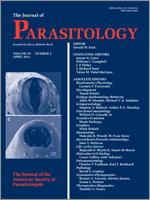Examination of some freshwater and brackishwater (estuarine) fishes in South Carolina in October 2009 yielded, in addition to other parasites, 2 little-known nematode species identified as Dichelyne fastigatus Chandler, 1935 (Cucullanidae), from the red drum, Sciaenops ocellatus (Linnaeus), from an estuary, and Rhabdochona ovifilamenta Weller, 1938 (Rhabdochonidae), from the shorthead redhorse, Moxostoma macrolepidotum (Lesueur), from Lake Moultrie. Light and scanning electron microscopy (the latter used for the first time for these species) made it possible to describe several important, but previously unreported, taxonomic features in D. fastigatus, such as the location of the excretory pore and deirids, the shape of deirids and a gubernaculum, the shape and size of eggs, the presence of precloacal ventral oblique muscle bands, and 11 pairs of caudal papillae and a pair of phasmids. It distinctly differs from the most similar Dichelyne cotylophora (Ward and Magath, 1917), a parasite of North American freshwater percids, in the number and arrangement of postanal papillae and by a markedly elevated cloacal region. Records of Dichelyne lintoni Barreto, 1922, from S. ocellatus probably concern D. fastigatus. Examination of R. ovifilamenta revealed a high degree of morphologic and biometric variability in this species. Based on our analysis, Rhabdochona laurentiana Lyster, 1940, Rhabdochona milleri Choquette, 1951, and Rhabdochona catostomi Kayton, Kritsky, and Tobias, 1979, are synonymized with R. ovifilamenta Weller, 1938, typically a parasite of North American catostomids.
How to translate text using browser tools
1 April 2011
Morphology and Taxonomic Status of Two Little-Known Nematode Species Parasitizing North American Fishes
František Moravec,
Céline Levron,
Isaure de Buron
ACCESS THE FULL ARTICLE

Journal of Parasitology
Vol. 97 • No. 2
April 2011
Vol. 97 • No. 2
April 2011




